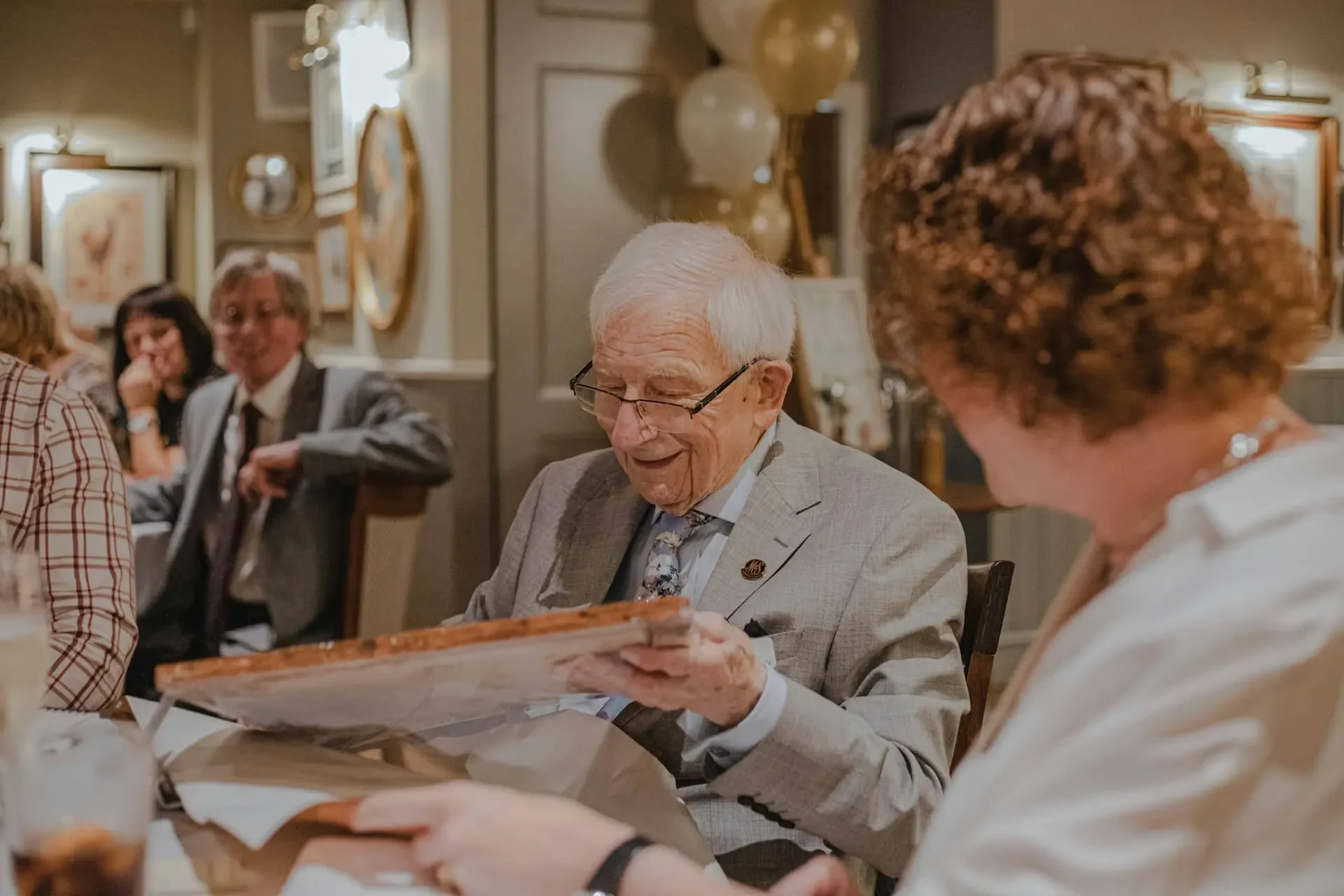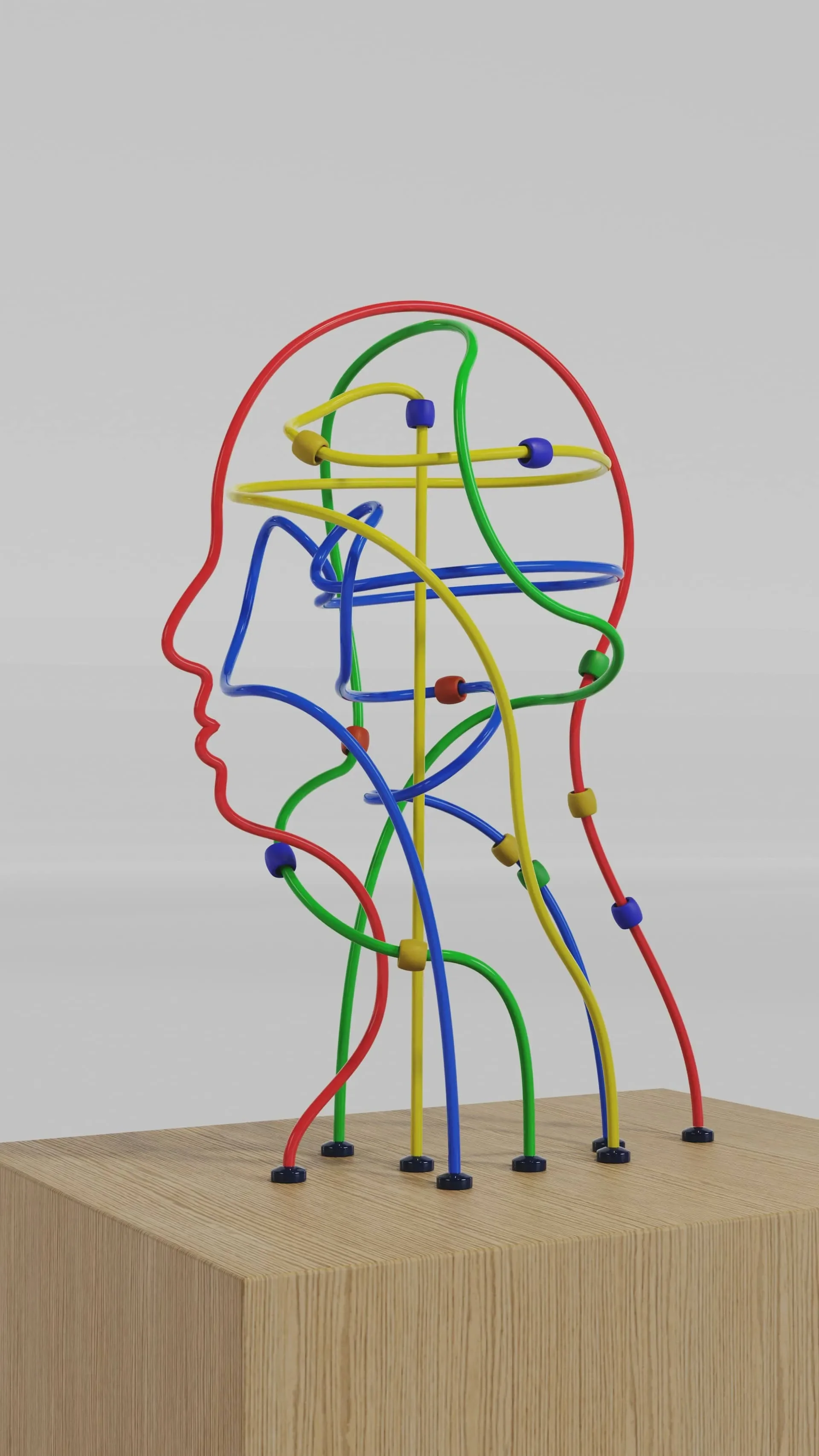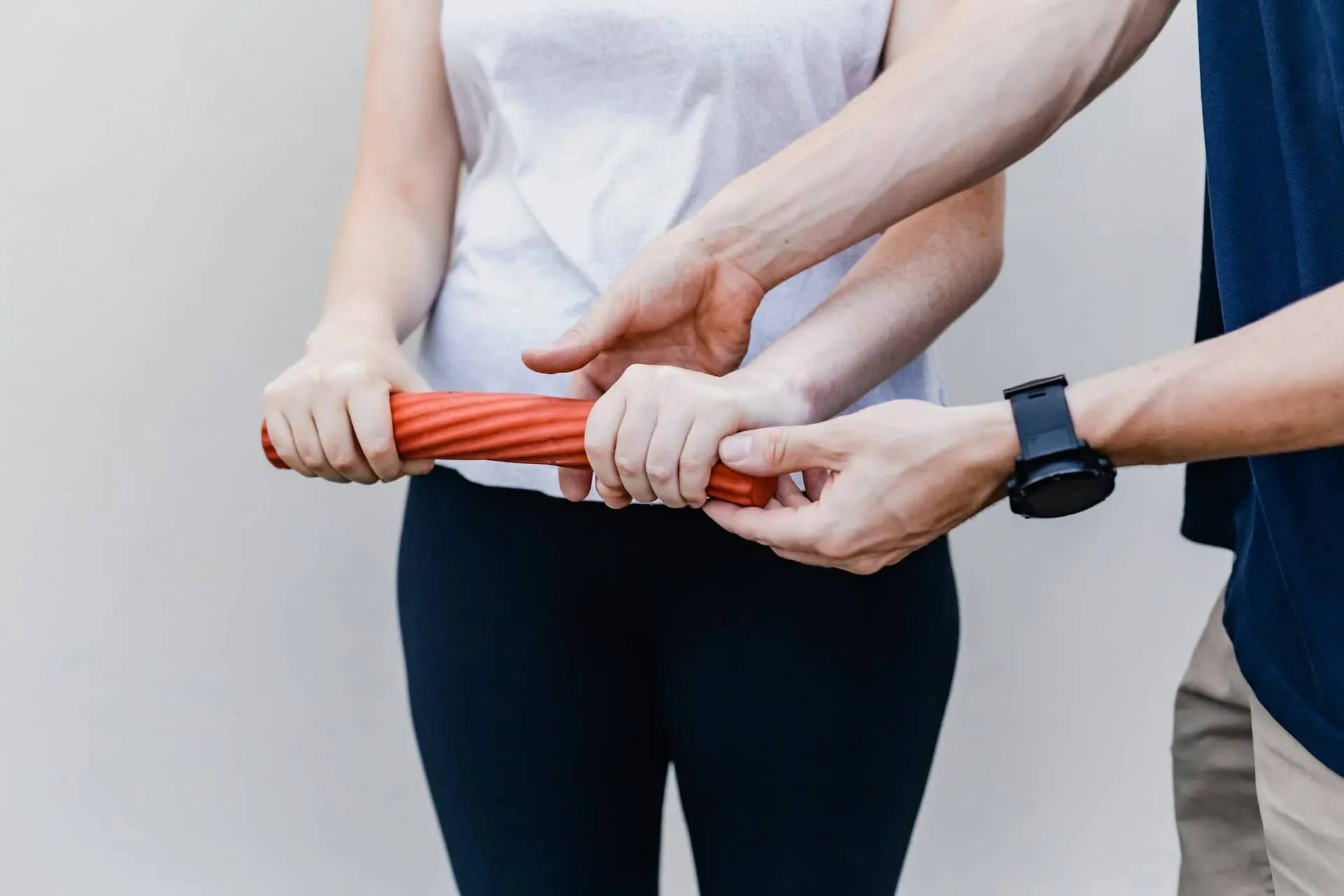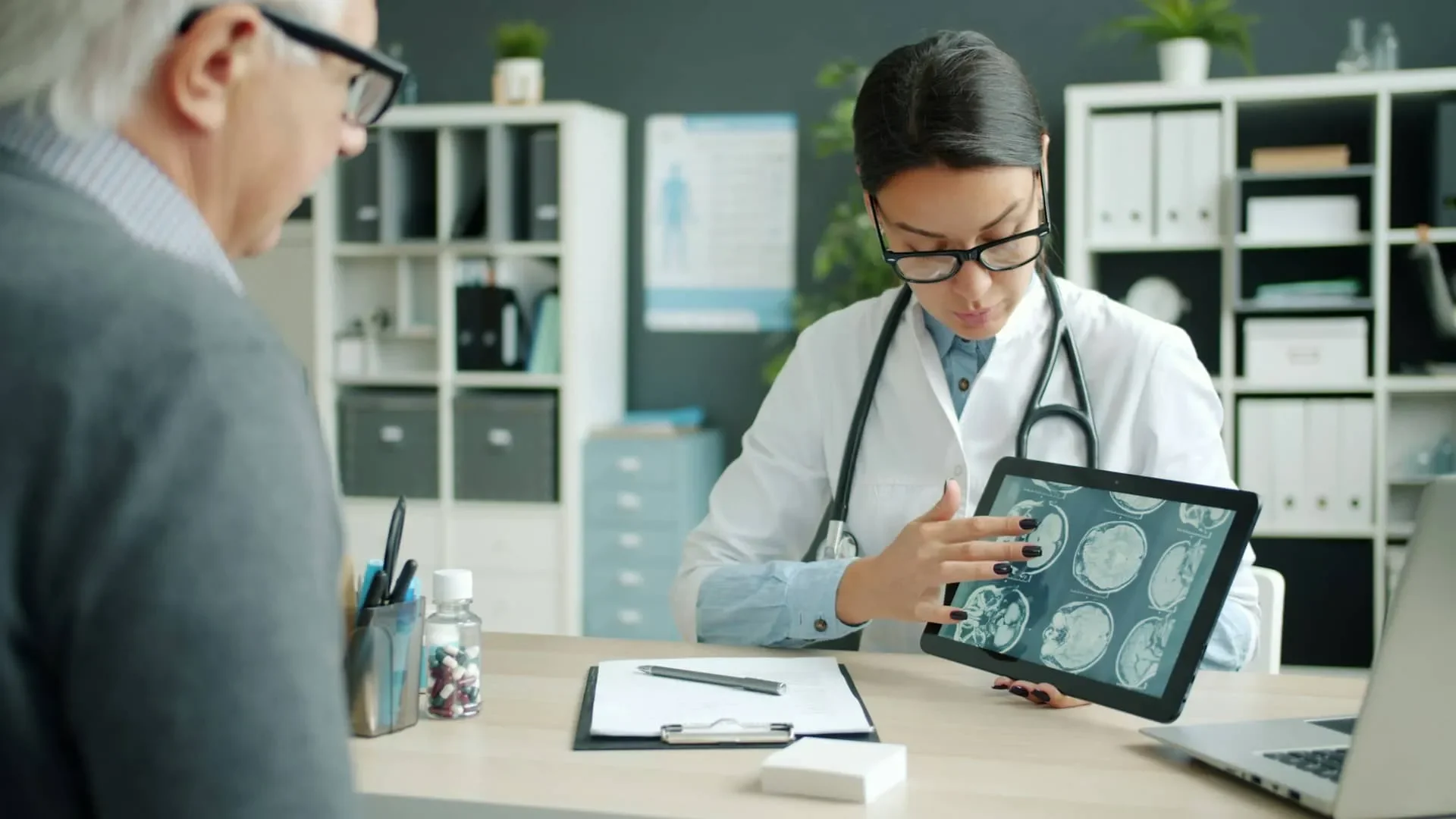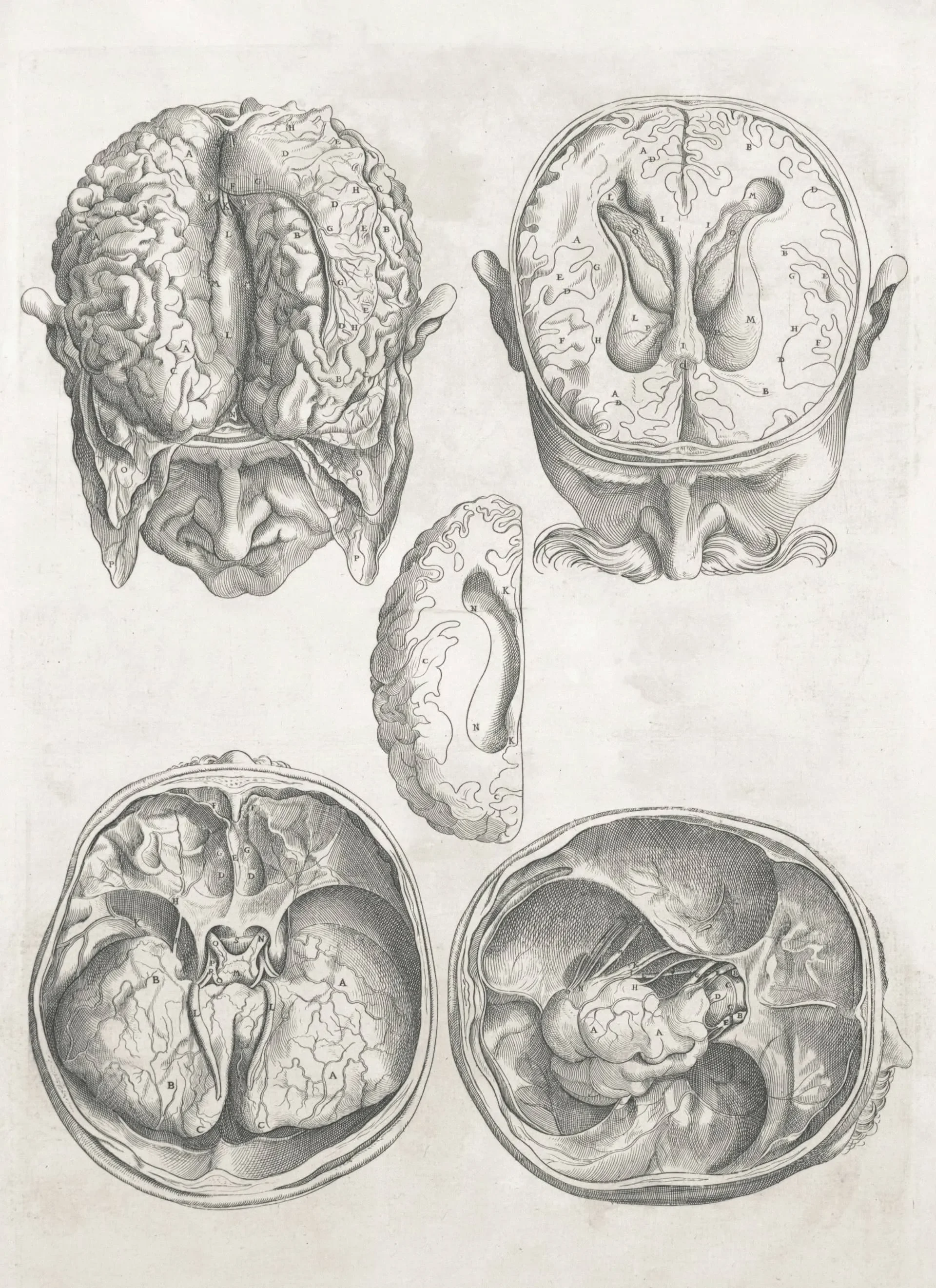Stroke Recovery Speech Therapy in Lake Worth, FL
A stroke changes everything in an instant. It can alter the way you speak, the words you find, the way you swallow, even the way you think and remember.
For many stroke survivors, the most challenging losses aren't physical mobility, but the ability to communicate, connect with loved ones, and maintain independence in daily life.
At Palm Beach Speech Therapy, licensed speech-language pathologist Nina Minervini, M.S., CCC-SLP provides comprehensive, in-home stroke recovery therapy throughout Lake Worth Beach, Florida, helping adults rebuild speech, language, swallowing, and cognitive skills with evidence-based treatment, compassion, and a focus on real-world recovery.
Whether your stroke happened days ago or years ago, meaningful improvement is possible. Speech therapy is about reclaiming your voice, your relationships, and your quality of life.
Learn About In-Home Stroke Recovery in Lake Worth
Complete this quick form and Nina will contact you within 24 hours to discuss your needs.
Understanding How Stroke Affects Communication and Swallowing
A stroke occurs when blood flow to the brain is interrupted, either by a blocked artery (ischemic stroke) or a ruptured blood vessel (hemorrhagic stroke). Within minutes, brain cells begin to die, and the functions controlled by the affected area (including speech, language, swallowing, and cognition) can be severely impaired.
The location and severity of the stroke determine which abilities are affected:
Left hemisphere strokes often impact language, speech production, reading, and writing
Right hemisphere strokes often affect attention, memory, social communication, and awareness
Brainstem strokes frequently cause swallowing difficulty (dysphagia) and speech clarity problems (dysarthria)
Cerebellar strokes may impair coordination of speech movements
The impact can range from mild difficulty finding words to complete loss of verbal communication. Some survivors struggle to understand what others are saying. Others can't move their lips and tongue to speak clearly. Many experience a combination of challenges that affect daily conversation, safety while eating, and cognitive processing.
The good news: The brain has remarkable capacity for neuroplasticity and the ability to reorganize, form new neural pathways, and recover function after injury. Speech therapy harnesses this neuroplasticity through targeted, repetitive practice that retrains the brain and rebuilds communication skills.
Common Post-Stroke Communication and Swallowing Disorders
Stroke survivors may experience one or more of the following conditions, each requiring specialized evaluation and treatment:
Aphasia
Aphasia is a language disorder that affects the ability to understand, speak, read, or write. It does not affect intelligence — it affects access to language.
Types of aphasia include:
Expressive (Broca's) Aphasia — You know what you want to say but can't get the words out. Speech is slow, effortful, and often limited to short phrases. Grammar and sentence structure are difficult.
Receptive (Wernicke's) Aphasia — You can speak fluently but the words don't make sense. You have difficulty understanding what others say and may be unaware your speech is jumbled.
Global Aphasia — Severe impairment of both understanding and expression. This is the most severe form of aphasia and often occurs after large strokes.
Anomic Aphasia — Difficulty finding the right words, especially nouns and verbs. You may substitute vague words like "thing" or "stuff" because you can't retrieve the specific word you need.
Aphasia affects approximately 25-40% of stroke survivors and can range from mild word-finding difficulty to complete loss of verbal communication. The emotional toll is profound, and many people with aphasia describe feeling "trapped" inside their own minds, fully aware but unable to express themselves.
Dysarthria
Dysarthria is a motor speech disorder caused by weakness, slowness, or lack of coordination in the muscles used for speaking — the lips, tongue, jaw, soft palate, and vocal cords.
Characteristics include:
Slurred, mumbled, or unclear speech
Speaking too slowly or too quickly
Soft or weak voice quality
Monotone or "robotic" speech
Difficulty controlling volume
Nasal-sounding speech
Breathiness or hoarseness
Dysarthria doesn't affect language or thinking; you know what you want to say and understand language perfectly. The challenge is purely physical: making your mouth cooperate to produce clear, intelligible speech.
Apraxia of Speech
Apraxia of speech (also called verbal apraxia or acquired apraxia) is a neurological disorder that affects the brain's ability to plan and coordinate the precise movements needed for speech.
Signs include:
Groping or struggling to position the lips and tongue
Inconsistent errors — saying a word correctly once, then incorrectly the next time
Difficulty starting to speak
Distorted or substituted sounds
Trouble with longer or more complex words
Knowing what you want to say but being unable to make your mouth do it
Apraxia is frustrating because the disconnect is between the brain's plan and the mouth's execution. The muscles aren't weak (as in dysarthria), and language is intact (unlike aphasia), but the motor programming is disrupted.
Cognitive-Communication Disorders
Stroke can impair cognitive functions that support communication, including:
Attention and concentration — Difficulty focusing during conversation or following along
Memory — Trouble remembering names, appointments, recent conversations, or instructions
Executive function — Problems with planning, organizing thoughts, problem-solving, or multitasking
Processing speed — Needing extra time to understand or respond
Reasoning and judgment — Impulsive decisions or difficulty thinking through consequences
Social communication — Missing social cues, interpreting tone, or staying on topic
Right hemisphere strokes often cause cognitive-communication deficits without traditional language problems, making them harder to identify but equally disabling.
Dysphagia (Swallowing Difficulty)
Up to 65% of stroke survivors experience swallowing difficulty in the acute phase, and many continue to have dysphagia weeks, months, or years after stroke.
Signs of post-stroke dysphagia include:
Coughing or choking during or after eating or drinking
Feeling like food is stuck in the throat
Wet, gurgly voice after swallowing
Difficulty chewing or controlling food in the mouth
Taking a long time to finish meals
Avoiding certain foods or textures
Recurrent pneumonia or respiratory infections
Dysphagia is dangerous. Food or liquid can enter the airway and lungs, causing aspiration pneumonia, a leading cause of death after stroke. Early evaluation and treatment are critical to prevent complications, maintain nutrition, and ensure safe eating.
Comprehensive Stroke Evaluation: Where Recovery Begins
Every stroke is different. Your therapy must be, too. Nina conducts a thorough, individualized evaluation in your Lake Worth home to understand your unique challenges and create a personalized recovery plan.
What to Expect During Your Stroke Evaluation
Step 1: Medical History and Stroke Background
Type, location, and date of stroke
Current medical status and medications
Pre-stroke communication and cognitive abilities
Hospitalization, acute rehab, and prior therapies
Current concerns from you and your family
Step 2: Speech and Language Assessment
Expressive language (speaking, word finding, sentence formulation)
Receptive language (understanding spoken language, following directions)
Reading comprehension and writing ability
Speech clarity and intelligibility
Fluency and rate of speech
Voice quality and volume
Step 3: Cognitive-Communication Evaluation
Attention and concentration
Short-term and long-term memory
Problem-solving and reasoning
Organization and planning
Awareness and insight
Step 4: Oral-Motor and Swallowing Screening
Strength and coordination of lips, tongue, jaw, and soft palate
Ability to safely manage saliva
Swallowing function with different foods and liquids
Signs of aspiration risk
Step 5: Functional Communication Assessment
Real-world communication scenarios (phone calls, conversations, reading)
Safety awareness and judgment
Ability to express needs and make decisions
Social interaction and pragmatic language
Step 6: Goal Setting and Treatment Planning
What matters most to you? What do you want to be able to do again?
Short-term and long-term goals
Recommended frequency and duration of therapy
Home practice strategies and caregiver involvement
Coordination with physicians, neurologists, or other therapists
Evidence-Based Stroke Recovery Therapy: How We Help You Heal
Recovery after stroke isn't about hoping your brain gets better — it's about actively retraining it. Neuroplasticity research shows that the brain can reorganize and form new pathways when given intensive, repetitive, meaningful practice.
Nina uses evidence-based treatment protocols proven to maximize recovery, including:
Aphasia Therapy Approaches
Semantic Feature Analysis (SFA) — Improves word retrieval by strengthening connections between words and their meanings
Verb Network Strengthening Treatment (VNeST) — Focuses on verbs to improve sentence production
Constraint-Induced Language Therapy (CILT) — Intensive practice forcing verbal communication without gestures or writing
Script Training — Practicing functional, personally relevant conversations until they become automatic
Reading and writing practice — Rebuilding literacy skills for daily tasks
Augmentative and Alternative Communication (AAC) — Using communication devices, apps, or visual supports when verbal communication is severely limited
Dysarthria Therapy Techniques
Oral-motor strengthening exercises — Building lip, tongue, and jaw strength and coordination
Breath support and control — Improving loudness and voice quality
Rate modification — Slowing speech for better clarity
Overarticulation practice — Exaggerating speech movements to improve intelligibility
SPEAK OUT® — An evidence-based program originally for Parkinson's that increases vocal loudness and clarity
Apraxia of Speech Treatment
Sound Production Treatment (SPT) — Systematic practice of speech sounds from simple to complex
Integral Stimulation — "Watch me, listen to me, say it with me" approach for motor learning
Phonetic placement cues — Visual and tactile cues for correct articulation
Repetitive practice — High-intensity repetition to rebuild motor plans
Increasing complexity gradually — From single sounds to syllables to words to sentences
Cognitive-Communication Rehabilitation
Attention training — Exercises to improve focus and reduce distractibility
Memory strategies — External aids (calendars, lists, alarms) and internal techniques (repetition, association, chunking)
Executive function tasks — Planning, problem-solving, and organizational practice
Compensatory strategies — Teaching workarounds when full recovery isn't possible
Functional cognitive tasks — Managing medications, following recipes, handling finances
Dysphagia (Swallowing) Therapy
Swallowing exercises — Strengthening the muscles involved in safe swallowing
Compensatory strategies — Posture changes, chin tuck, head rotation
Diet texture modifications — Adjusting food and liquid consistency for safety
Safe swallowing techniques — Effortful swallow, supraglottic swallow, multiple swallows
Coordination with instrumental swallow studies (Modified Barium Swallow or FEES) when needed
Caregiver and Family Training
Recovery happens all day, every day. Nina provides comprehensive caregiver training on:
How to communicate most effectively with your loved one
What to expect during recovery
Home practice activities and carryover strategies
How to recognize and respond to frustration or depression
Safety considerations for swallowing and eating
Resources and support groups for stroke survivors and families
Why In-Home Stroke Therapy Works Better
Traditional outpatient therapy requires transportation, waiting rooms, and practicing in unfamiliar clinical settings. For stroke survivors, especially those with mobility challenges, fatigue, or cognitive impairment, this can be overwhelming, exhausting, and ineffective.
In Lake Worth, in-home therapy offers significant advantages:
Real-world practice — Therapy happens in the environment where you actually live, using your phone, your kitchen, your daily routines
Reduced stress and fatigue — No transportation challenges or exhausting clinic visits
Better carryover — Skills learned at home transfer immediately to daily life
Family involvement — Caregivers and loved ones can observe, participate, and learn
Comfort and privacy — Recovering in a safe, familiar space where you feel at ease
Flexible scheduling — Sessions work around your energy levels, medical appointments, and daily routine
Personalized environment — Nina sees how you function at home and can address real challenges (using the phone, making coffee, reading the mail)
The Timeline of Stroke Recovery: What to Expect
Stroke recovery is not linear. Progress happens in spurts, plateaus, and breakthroughs. Understanding the typical timeline can help set realistic expectations:
Acute Phase (0-6 months): The brain is most responsive to therapy during the first six months after stroke. This is when the most rapid recovery typically occurs. Early, intensive speech therapy during this window maximizes outcomes.
Subacute Phase (6-12 months): Recovery continues but may slow. Consistent therapy remains important to maintain gains and continue building skills.
Chronic Phase (12+ months and beyond): Recovery is still possible years after stroke. Research shows that continued therapy can lead to meaningful improvements even in the chronic phase. "Use it or lose it" applies, and ongoing practice maintains and builds on progress.
The truth: There is no expiration date on recovery. While early intervention is ideal, therapy can help at any stage after stroke.
Proudly Serving Lake Worth and Surrounding Communities
Palm Beach Speech Therapy provides in-home stroke recovery services and speech therapy throughout Lake Worth Beach and its neighborhoods including:
Mango Groves
Eden Place
Sunset Ridge
South Palm Park
Bryant Park
Parrot Cove
College Park
Old Lucerne
Downtown Jewel
Lake Osborne
Lucerne Pointe
Whether you're recovering in Historic College Park, near Bryant Park, overlooking the Intracoastal Waterway, or in one of Lake Worth's vibrant residential communities or assisted living facilities, therapy comes directly to you.
Life After Stroke: Reclaiming Independence and Connection
Stroke doesn't just affect your ability to speak or swallow. It affects your sense of self, your relationships, and your place in the world. Many stroke survivors describe feeling invisible, frustrated, or isolated. Family members struggle with how to help without taking over.
Effective therapy addresses not just skills, but quality of life:
Participating in conversations with family and friends
Answering the phone with confidence
Ordering food at a restaurant
Expressing your thoughts, needs, and feelings
Reading books, emails, or menus
Managing your own schedule and decisions
Eating and drinking safely without fear
Returning to hobbies, volunteer work, or social activities
Recovery is about rebuilding your life, your voice, and your independence.
Start Your Stroke Recovery Journey Today
You don't have to navigate stroke recovery alone. Expert, compassionate help is available right here in Lake Worth.
Schedule your in-home stroke evaluation by calling (561) 797-2343 or completing the contact form. Nina will respond personally within 24 hours to discuss your needs, answer your questions, and begin your path to recovery.
Every day of therapy is a step toward reclaiming your voice, your independence, and your quality of life.
Frequently Asked Questions | Stroke Recovery Speech Therapy (Lake Worth, FL)
How soon after a stroke should speech therapy begin?
As soon as you’re medically stable. The first six months are the most responsive, but therapy at any stage—even years later—can produce meaningful gains.
Can I still improve if my stroke was years ago?
Yes. Neuroplasticity allows improvement in the chronic phase with consistent, targeted practice and carryover at home.
Do you provide in-home stroke therapy in Lake Worth?
Yes. We deliver one-on-one, in-home therapy throughout Lake Worth Beach and nearby neighborhoods (South Palm Park, Bryant Park, Parrot Cove, College Park, Mango Groves, Lake Osborne, and more).
What communication problems after stroke can you treat?
Aphasia, dysarthria, apraxia of speech, voice changes, cognitive-communication deficits (attention, memory, executive function), and social communication challenges.
What is aphasia?
A language disorder affecting understanding, speaking, reading, or writing. Intelligence is intact; access to language is impaired. Treatment includes SFA, VNeST, script training, and functional conversation practice.
What’s the difference between dysarthria and apraxia of speech?
Dysarthria is a muscle movement/speech clarity problem; apraxia is a motor-planning problem. Both can co-occur and require different approaches.
How do you evaluate stroke-related communication and cognition?
We assess speech, language, reading/writing, voice, attention, memory, problem-solving, and functional tasks (phone, medication, mail). We set goals that matter to you.
Do you also evaluate swallowing (dysphagia)?
Yes. We screen and treat dysphagia and coordinate instrumental studies (MBSS or FEES) when indicated.
What happens during a swallowing evaluation?
History review, oral-motor exam, and swallow trials with different foods/liquids, followed by risk assessment and immediate safety recommendations.
What therapies do you use for swallowing problems?
Evidence-based exercises (e.g., effortful swallow, Mendelsohn, CTAR), compensatory strategies (chin tuck, head turn), and IDDSI-guided texture and liquid modifications.
Will I need to change my diet permanently?
Often no. Texture or liquid changes are safety tools while we strengthen and retrain. We aim for the least restrictive diet possible.
How long will I need speech therapy?
It varies. Some make rapid gains in 8–12 weeks; others benefit from longer care. Frequency and duration are set to your goals, fatigue, and progress.
Do you offer intensive therapy blocks?
Yes. We can schedule higher-frequency blocks when appropriate to leverage neuroplasticity and accelerate gains.
What should I do between sessions?
Daily home practice. You’ll receive tailored exercises, scripts, and carryover activities that fit your routines.
How do you involve caregivers?
We train caregivers in communication support, safe feeding, cueing, pacing, and how to spot red flags—because recovery happens all week, not just in sessions.
Can you help if I can’t talk yet?
Yes. We introduce gestures, writing, communication boards, or speech-generating devices (AAC) and build verbal skills as they emerge.
Do you provide telehealth?
Yes—telehealth is available across Florida for appropriate cases, often after an initial in-person evaluation.
Will therapy help with phone, email, and everyday tasks?
Absolutely. We practice real-world goals (answering calls, ordering at restaurants, reading mail, managing schedules) to ensure carryover.
Do you coordinate with my doctors and other therapists?
Yes. We coordinate with neurology, primary care, PT/OT, ENT/radiology (for MBSS/FEES), and home-health teams to keep your plan unified.
Is stroke therapy covered by insurance?
Many plans—including Medicare—cover medically necessary speech-language pathology. Coverage varies by plan; private-pay is available.
What do I bring or prepare for my first visit?
Medication list, recent medical notes (if available), and examples of tasks or foods/liquids that are challenging. A caregiver’s input is very helpful.
Is there an age limit for therapy?
No. Adults of all ages benefit—from recent stroke to chronic recovery.
What areas of Lake Worth do you serve?
Lake Worth Beach and surrounding neighborhoods (South Palm Park, Bryant Park, Parrot Cove, College Park, Mango Groves, Eden Place, Sunset Ridge, Old Lucerne, Downtown Jewel, Lake Osborne, Lucerne Pointe) plus nearby Lantana, Lake Clarke Shores, Greenacres, Boynton Beach, West Palm Beach, Hypoluxo, and Atlantis.
What are signs I may need a swallowing study?
Coughing/choking, wet voice, multiple swallows per bite, food “sticking,” weight loss, dehydration, or recurrent pneumonia. We’ll advise if MBSS/FEES is indicated.
How do you set goals?
We start with what matters most to you—being understood, reading email, ordering food, eating safely with family—and build measurable, achievable steps toward those outcomes.
Let’s do this together.
If someone in your family is recovering from a stroke, I’m here to help. Fill out the form below and I’ll contact you within 24 hours to discuss your needs and schedule a session.
